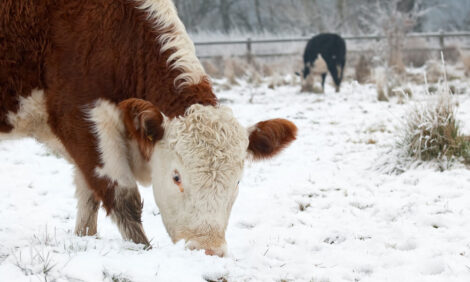



Technology Could Take Agriculture Halfway to Climate Targets
EU - Unless greenhouse gas emissions from food consumption are reduced substantially, EU climate targets will not be met, according to a new study from Swedish researchers.Currently accounting for about 25 per cent of greenhouse gas emissions, emissions from food and agriculture need to be cut by about three-quarters by 2050 to meet the targets.
Researchers at Chalmers University of Technology and SP Technical Research Institute of Sweden studied a range of measures for cutting food-related emissions. Besides reductions in beef and dairy consumption, they found that technology improvements will be crucial. Under favourable conditions, better technology could cut these emissions by as much as 50 per cent.
"Emissions from manure storage can all but be eliminated if the facilities are covered and waste gases are flared," said David Bryngelsson, lead author of the study. "And emissions from fertiliser production can largely be avoided by using the latest technology. However, far more ambitious climate policies for agriculture are needed to make these technology improvements happen."
The technological prospects for cattle are less promising, according to the researchers. This is a critical finding, since cattle account for a very large share of the emissions. The study therefore concludes that reductions in beef consumption are necessary for meeting the climate targets.
"But we don't have to give up meat entirely," said Stefan Wirsenius, co-author of the study. "Poultry and pork cause rather low emissions, in a range equivalent to 10 to 30 pounds of carbon dioxide per pound of protein, while beef cause 200 pounds per pound protein. So we can continue to eat large quantities of poultry and pork - provided that we cut back on beef."
Cheese and other dairy products are also serious climate problems, according to the study: "EU and US consumption of cheese and other dairy products is among the highest in the world and causes a climate impact equal to that of their pork and chicken consumption," said Stefan Wirsenius.
"If we were to replace some of the dairy products with vegetable products, such as oat milk, we would have a better chance of meeting our climate targets."
The scientists have also looked at the effect of reducing food waste. The results may be surprising: "Although wasting less food is good for the climate, the impact of reducing waste is small compared to what's required to meet the targets," said David Bryngelsson.
"Reducing the amount of food that goes to waste can only cut emissions from food and agriculture by five to ten per cent. Reducing beef and dairy consumption is much more important."
The findings are reported in the article "How can the EU climate targets be met? A combined analysis of technological and demand-side changes in food and agriculture," in the journal Food Policy. Study authors are David Bryngelsson, Stefan Wirsenius, Fredrik Hedenus, and Ulf Sonesson.
TheCattleSite News Desk


